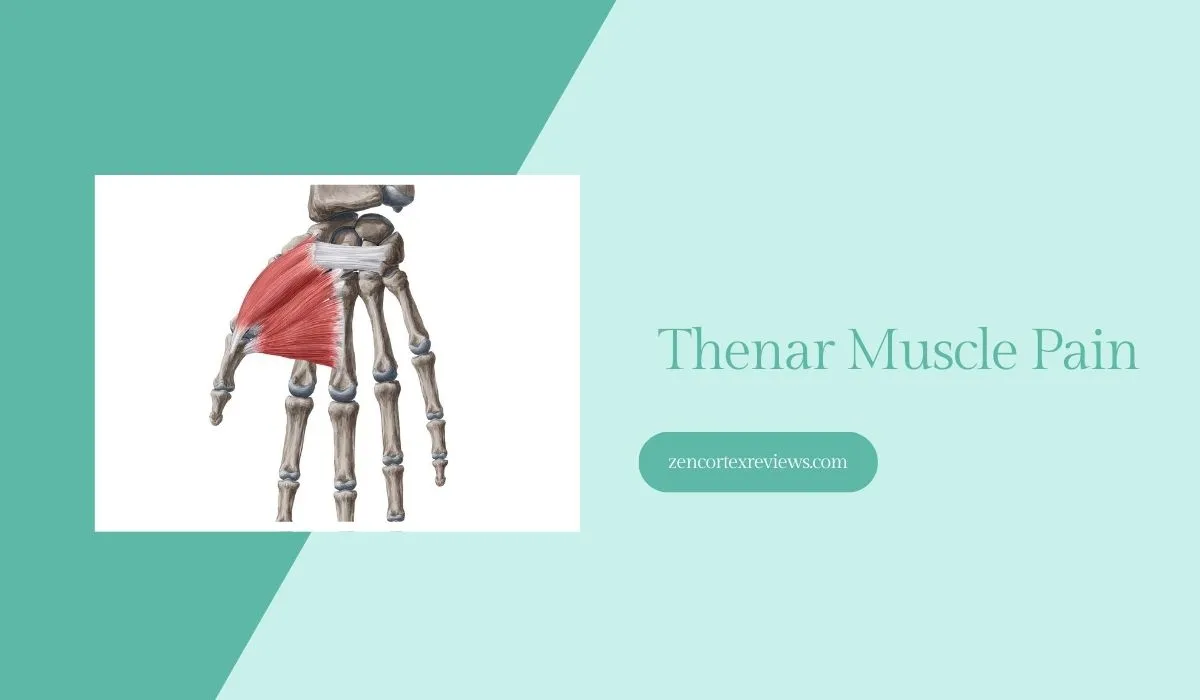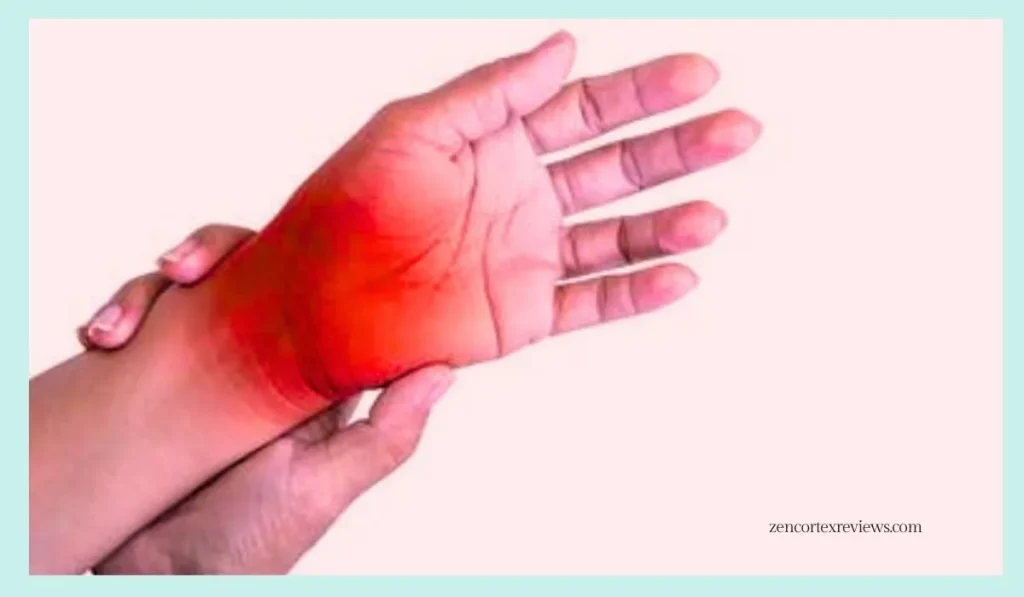Understanding Thenar Muscle Pain: Causes, Symptoms, and Treatment
Thenar muscle pain affects the thumb base, impacting grip and dexterity. Explore causes like overuse, trauma, and compression. Learn symptoms, treatments like rest, therapy, and injections, plus prevention tips for this debilitating condition.

Disclaimer: Our recommendations are sincere, driven by the products’ benefits. When you buy through our links, we may earn a commission, backing our testing and development at no extra cost to you.
The thenar muscle, located at the base of the thumb, plays a crucial role in our daily activities, enabling us to grip, pinch, and perform various fine motor tasks. However, when this muscle becomes injured or strained, it can lead to a condition known as thenar muscle pain, which can significantly impact our ability to perform even the simplest of tasks. In this article, we’ll explore the causes, symptoms, and treatment options for thenar muscle pain.
Anatomy of the Thenar Muscle

Before delving into the causes and treatment of thenar muscle pain, it’s essential to understand the anatomy of this crucial muscle. The thenar muscle is a group of four muscles located in the palm, responsible for controlling the movement of the thumb. These muscles are:
- Abductor pollicis brevis
- Opponens pollicis
- Flexor pollicis brevis
- Abductor pollicis longus
These muscles work together to enable various thumb movements, such as opposition (bringing the thumb across the palm), abduction (moving the thumb away from the hand), and flexion (bending the thumb).
Causes of Thenar Muscle Pain
Thenar muscle pain can arise from various underlying conditions or injuries, including:
- Overuse or Repetitive Strain Injury (RSI) Repetitive motions or activities that involve excessive gripping, pinching, or forceful use of the thumb can lead to thenar muscle strain and pain. This is common among individuals who engage in manual labor, sports that require intense gripping (e.g., rock climbing, weightlifting), or those who spend long hours typing or using hand tools.
- Trauma or Injury Direct trauma to the thenar muscle, such as a fall or impact, can cause muscle tears, bruising, or inflammation, resulting in muscle pain.
- Compression or Entrapment Conditions like carpal tunnel syndrome or other nerve compressions in the wrist or hand can lead to thenar muscle pain and weakness due to nerve impingement.
- Arthritis Conditions like rheumatoid arthritis or osteoarthritis can affect the joints in the hand and wrist, leading to inflammation and muscle pain.
- De Quervain’s Tenosynovitis This condition involves inflammation of the tendons that control the movement of the thumb, often causing pain and swelling in the thenar muscle area.
Symptoms of Thenar Muscle Pain
The primary symptom of thenar muscle pain is, as the name suggests, pain or discomfort in the base of the thumb or the thenar eminence (the fleshy part of the palm below the thumb). Other symptoms may include:
- Weakness or difficulty gripping or pinching objects
- Swelling or tenderness in the thenar area
- Numbness or tingling in the thumb or hand
- Stiffness or limited range of motion in the thumb
In severe cases, individuals may experience difficulty performing daily tasks that require fine motor skills, such as writing, buttoning shirts, or holding utensils.
Diagnosis and Treatment
If you experience persistent or severe thenar muscle pain, it’s essential to consult a healthcare professional for proper diagnosis and treatment. The diagnostic process may involve physical examinations, imaging tests (such as X-rays or MRI scans), and nerve conduction studies to identify the underlying cause.
Treatment options for thenar muscle pain may vary depending on the severity and cause of the condition, but they often include:
- Rest and Activity Modification Resting the affected hand and avoiding activities that exacerbate the pain can help reduce inflammation and promote healing.
- Cold and Heat Therapy Applying ice packs or cold compresses to the affected area can help reduce swelling and alleviate pain, while heat therapy can improve blood flow and relax the muscles.
- Medications Over-the-counter or prescription anti-inflammatory medications, such as ibuprofen or naproxen, can help reduce inflammation and relieve pain.
- Splinting or Immobilization In some cases, wearing a splint or brace to immobilize the thumb and wrist can provide rest and support for the thenar muscle, allowing it to heal.
- Physical Therapy A physical therapist can design a personalized rehabilitation program that includes exercises, stretches, and massage techniques to improve strength, flexibility, and range of motion in the affected area.
- Corticosteroid Injections For severe or persistent cases, a corticosteroid injection into the thenar muscle area can help reduce inflammation and alleviate pain.
- Surgery In cases where conservative treatments fail or the condition is severe, surgical intervention may be recommended to release entrapped nerves, repair torn tendons, or address underlying conditions like carpal tunnel syndrome.
Prevention and Self-Care
While some causes of muscle pain may be unavoidable, there are several preventive measures and self-care strategies that can help reduce the risk of developing this condition or prevent it from worsening:
- Proper Ergonomics Maintaining proper posture and ergonomics while working, typing, or performing manual tasks can help reduce strain on the thenar muscle and prevent overuse injuries.
- Exercise and Stretching Incorporating regular stretching and strengthening exercises for the hands, wrists, and forearms can help improve flexibility and support the thenar muscle.
- Adequate Rest and Recovery Allowing for adequate rest and recovery periods after strenuous activities or manual labor can prevent overuse and strain on the thenar muscle.
- Proper Equipment and Tools Using ergonomically designed tools and equipment that reduce the need for excessive gripping or pinching can help minimize strain on the thenar muscle.
- Lifestyle Modifications Maintaining a healthy weight, managing conditions like arthritis or diabetes, and quitting smoking can all contribute to better overall hand and muscle health.
Related: How To Use Mullein And Garlic Oil For Ear Infections?
Conclusion
Addressing Thenar Muscle Pain for Optimal Function Thenar muscle pain can significantly impact our ability to perform daily tasks and activities that require fine motor skills and grip strength. By understanding the causes, symptoms, and available treatment options, individuals can seek prompt medical attention and appropriate management strategies.
Prevention remains crucial, and adopting proper ergonomics, regular stretching and exercising, and allowing for adequate rest and recovery can help reduce the risk of developing thenar muscle pain. With the right approach, individuals can effectively manage this condition and maintain optimal hand function for their daily living and occupational needs.
Lindsay Martinez
Lindsay Martinez, Au.D., is a licensed audiologist with over 10 years of experience in the field of hearing healthcare. She earned her Doctor of Audiology degree from the University of California, Los Angeles, and currently practices at Martinez Hearing Clinic, a leading audiology practice in the San Francisco Bay Area. As an expert in diagnosing and treating a wide range of hearing disorders, Dr. Martinez specializes in fitting advanced hearing aids and assistive listening devices. She is a fellow of the American Academy of Audiology and has published numerous peer-reviewed articles on topics such as noise-induced hearing loss and the latest innovations in hearing technology. Passionate about patient education, Dr. Martinez is committed to helping her patients improve their hearing and overall quality of life.
